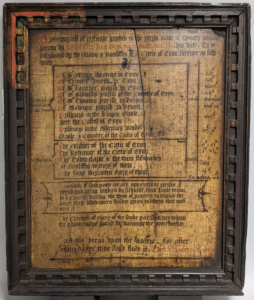By Lindsey Ryder
Like many others, for the last few months I have been working remotely, in line with lockdown restrictions. Throughout this time, I have focused on a research project centred on improving the storage methods of the silver collection, to address tarnishing issues.
We began monitoring the silver storage cabinets in ‘More In Store’ to better understand the environmental conditions, contributing to the accelerated tarnishing process. My research highlighted some alternative cleaning methods as well as new anti-tarnishing cloths for storage.
I will soon begin the process of treating and repacking the silver to prepare it for the ‘In Plain Sight: Transatlantic Slavery and Devon’ exhibition (now re-scheduled for 2022).
Working with saliva

Alongside working with the silver collections, I have also resumed practical work in the laboratory. This has included the treatment of a 16th century dedication plaque, with the help of properties of saliva. I used a saliva cleaning process, utilizing the ability of the α-enzyme in saliva, to break down starches and remove tough layers of dirt. This proved to be very effective.
After consulting with a freelance paintings conservator, I used a urea-aldehyde resin, for retouching areas of paint loss on the plaque. This product has stable aging characteristics and is reversible in Stoddard Solvents. The benefits of this are that it allows removal, without affecting the original varnish and paint layers below. Additionally, the retouching process also blended in an area from a previous cleaning attempt, with the rest of the surface. All in all, this produced some very good results.
I’m really looking forward to returning to the museum and preparing for its reopening, in the very near future.
This content is viewable by members only. Login or sign up to get access.

